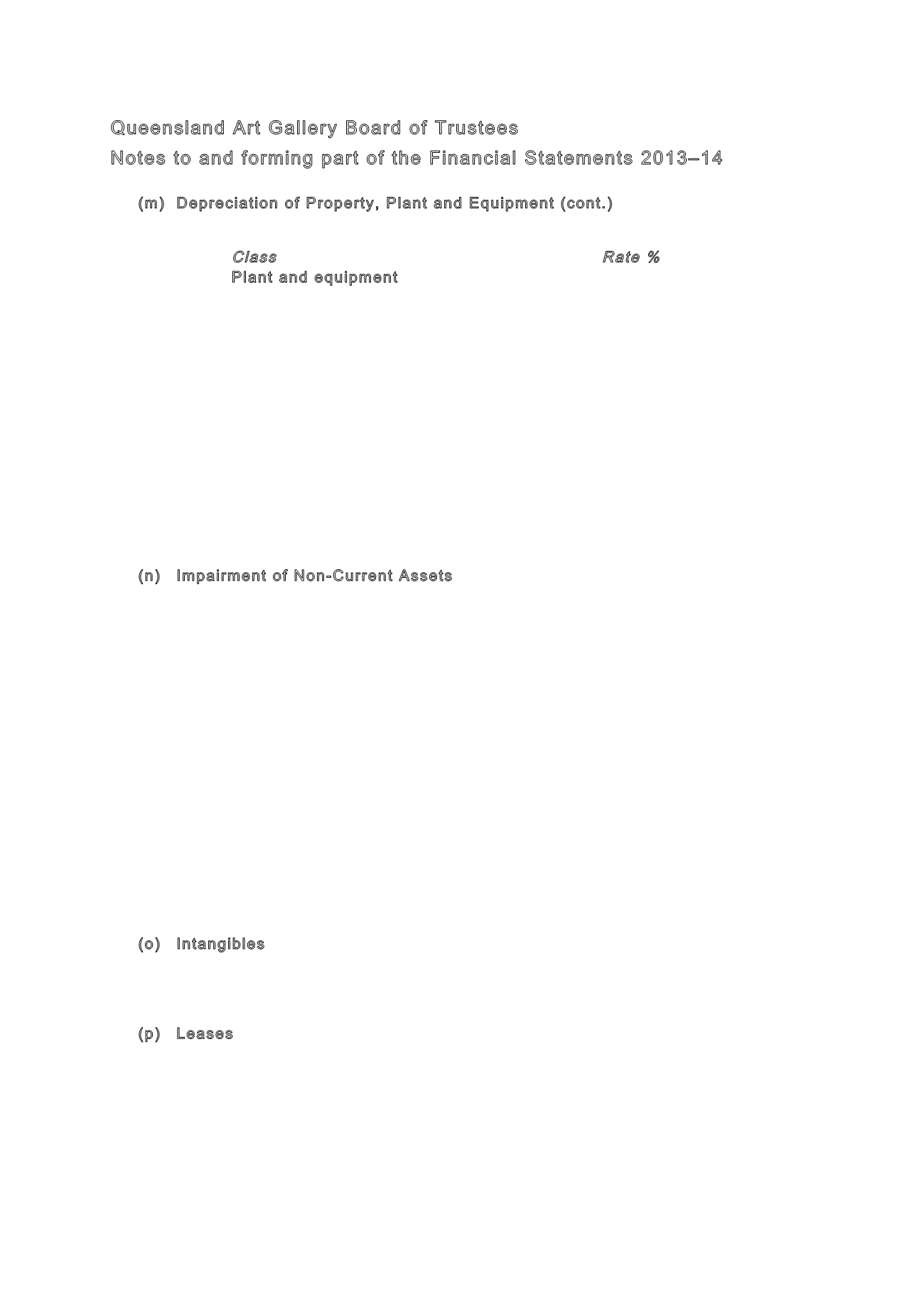

Queensland Art Gallery Board of Trustees Annual Report 2013–14
FINANCIAL STATEMENTS
PART B
12
12
Queensland Ar t Gallery Board of Trustees
Notes to and forming par t of the Financial Statements 2013–14
(m) Depreciation of Property, Plant and Equipment (cont.)
For each class of depreciable assets, the following depreciation rates are used:
Class
Rate %
Plant and equipment
Computers
30
Motor vehicles
25
Printers
20
Leasehold improvement
6–10
Other
10
Where assets have separately identifiable components that are subject to regular
replacement, these components are assigned useful lives distinct from the asset to which
they relate and are depreciated accordingly.
Any expenditure that increases the originally assessed capacity or service potential of an
asset is capitalised and the new depreciable amount is depreciated over the remaining
useful life of the asset to the Gallery.
The Gallery’s Art Collection and the Gallery’s Library Heritage Collection are not depreciated
due to the heritage and cultural nature of the assets.
(n) Impairment of Non-Current Assets
All non-current physical assets are assessed for indicators of impairment on an ongoing
basis. If an indicator of possible impairment exists, the Gallery determines the asset’s
recoverable amount. Any amount by which the asset’s carrying amount exceeds the
recoverable amount is recorded as an impairment loss.
The asset’s recoverable amount is determined as the higher of the asset’s fair value less
costs to sell and depreciated replacement cost.
An impairment loss is recognised immediately in the Statement of Comprehensive
Income, unless the asset is carried at a revalued amount. When an asset is measured at
a revalued amount, the impairment loss is offset against the asset revaluation surplus of
the relevant class to the extent available.
Where an impairment loss subsequently reverses, the carrying amount of the asset is
increased to the revised estimate of its recoverable amount, but so that the increased
carrying amount does not exceed the carrying amount that would have been determined
had no impairment loss been recognised for the asset in prior years. A reversal of an
impairment loss is recognised as income, unless the asset is carried at a revalued
amount, in which case the reversal of the impairment loss is treated as a revaluation
increase. Refer also to Note 1 (k).
(o) Intangibles
Intangible assets with a cost or other value equal to or greater than $100,000 are recognised
in the financial statements. Items with a lesser value are expensed. Currently, the Gallery
has no intangible assets.
(p) Leases
A distinction is made in the financial statements between finance leases that effectively
transfer from the lessor to the lessee substantially all the risks and benefits incidental to
ownership, and operating leases under which the lessor effectively retains substantially
all risks and benefits.
The Gallery has no financial leases.
Operating lease payments are representative of the pattern of benefits derived from the
leased assets and are expensed in the periods in which they are incurred.
















